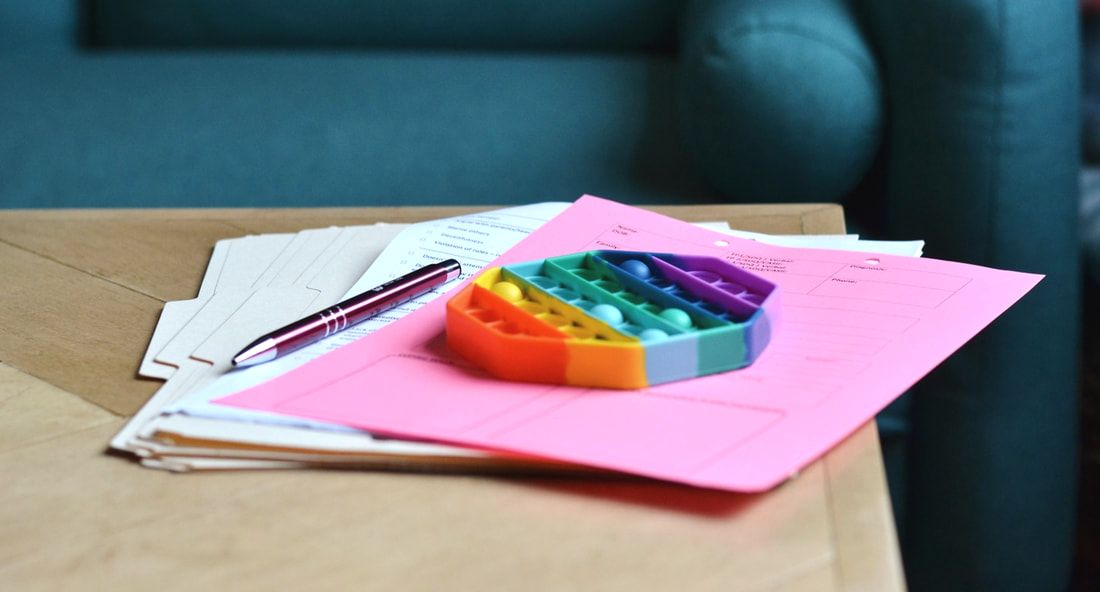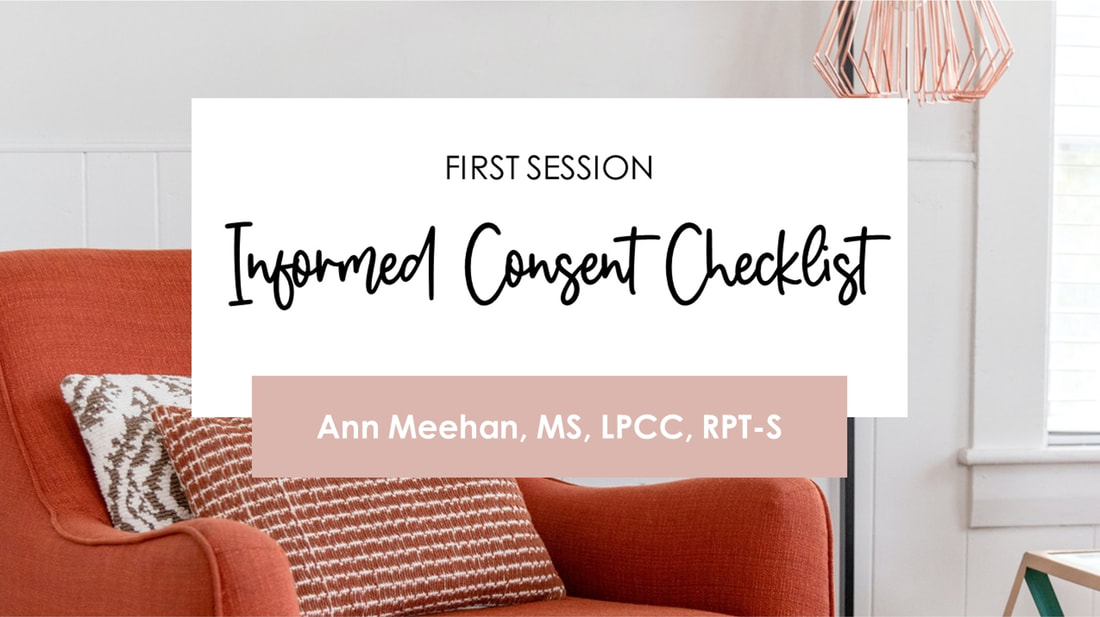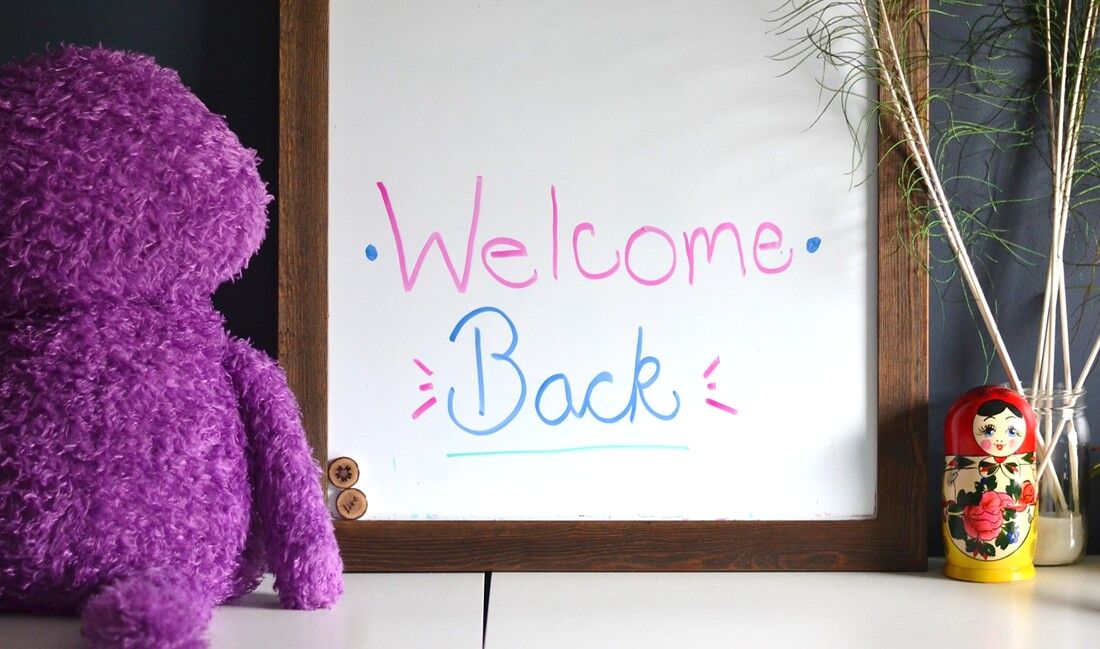|
So you’ve greeted the client, given a great informed consent, now it’s on to asking those millions of questions you need to in the diagnostic assessment session to get enough information to make a diagnosis. In Minnesota according to the Department of Human Services in order to have a comprehensive Diagnostic Assessment you need to include not only current and historical symptoms and mental health treatment but a comprehensive assessment of factors that may impact development and the presenting problem. Factors that need to be assessed include (but are definitely not limited to) information about meeting developmental milestones, any difficulties with development, trauma or maltreatment history, health history, family health and mental health history, academic functioning, and social engagement and resources. If you take insurance, getting all the information for the Diagnostic Assessment write up can be daunting in a short amount of time. Some pro tips include having families fill out intake forms beforehand answering questions about each area of assessment. You can also meet alone with the parent for a portion of time if you need information quickly and are worried the child will be negatively impacted by this process. However, insurance does state that the client needs to be present in some capacity for the assessment - which makes a ton of sense! We don’t want to diagnose children without getting their perspective of their difficulties. I mean, it is their life right? AND whether they agree or disagree with their caregiver about level of symptoms and impact on their life is full of rich clinical data! I wanted to share with you some of my favorite go-to questions to ask young people during the assessment phase Diagnostic Assessment clinical interview:
As always the language in these questions can become simplified or more complex depending on the age of the client or situation. If the child has parents who are divorced I add questions about divorce history, transition, and separate households. I also ask trauma questions and questions specific to symptoms the parent is identifying as the presenting problem. And lastly, if a client is uncomfortable with any of these questions - no problem! We skip it and move on! Although (if you take insurance) you need enough information for a diagnosis before beginning treatment, you always want to let the relationship lead the way. What about you? What are your favorite questions to get young people talking in assessment sessions? Drop your favorites below! Want a deeper dive into intake sessions? Check out this training HERE! Let's Connect - click here to join my email list!
8 Comments
How many people do you think actually read your informed consent? Like actually sit down and read all the information word for word? Nothing more exhilarating than reading about HIPAA, clients rights, insurance reimbursements, and privacy practices! Am I right? If your informed consent is anything like mine, clients head straight for the signature portion and move it right along to the other forms and paperwork they need to sign to get this therapy thing a movin! This is why I believe it is so important to go over a quick verbal informed consent at the start of our time working with children. In the slim chance that parents are reading it, the child certainly isn’t getting in on the action. Ethically we want to make sure that parents and young people are aware of the therapy process, limitations, and policies even if they choose to pass on wading through all the technical jargon in the informed consent. We want to make sure they receive informed consent on things such as confidentiality and what were to happen if you would see them in public. And, it’s not only ethical, but I believe that a strong informed consent significantly increases client retention and engagement in the therapy process. If clients (or parents) know how long therapy might take, what types of activities clients and parents might expect, and what the expectations are for parent involvement we manage expectations for what the process will be, thus increasing engagement and communication. Since I am not a superhuman and do not have the entire informed consent memorized I developed an informed consent checklist that I still have with me every intake session, even though I have been doing this work for over 13 years! It is so easy to forget the little things so this checklist makes it a breeze! One of the most important things on the checklist is client confidentiality and what you will do if you see a client in public. Even when I lived in a busy metro area I would bump into clients occasionally, but in a more rural area it seems like every trip to Target is a high likelihood that you will see a past or current client. Without fully explaining confidentiality to a child you are at risk for damaging the relationship should you see them out. If you don’t say hi first they might think you are ignoring them, upset with them, or don’t like them. Also, while maintaining confidentiality in public is super important, the reality is that most young people see us as just another helper. Like a coach, teacher, or mentor. This is the script I developed to explain confidentiality to children. “Now, what we do in this office is confidential. That means that I don’t tell anyone outside of here what we do or say in this office like your sister, bus driver, or best friend. However, there are some important people in your life that do need to know what we talk about. Who might that be? (usually they eventually get to naming a parent or guardian). Yes! Your mom/dad/guardian does need to know some of the things we talk about. If there are other people outside of mom/dad/guardian that need to know what we do in here, like a school counselor or doctor I will tell you beforehand and let you know I will be speaking with them and we have to sign some paperwork that lets me talk with them - it is all very official and not a secret or private thing. Now, because what we do in here is confidential, if I were to see you out in public I wouldn’t acknowledge you or say hi first. I want it to be up to you, I want you to decide. You can choose to say hi or wave OR you can choose to pretend you don’t know me and we have never met before - either one is okay! My feelings won’t be hurt. The thing I am most concerned about is that you feel comfortable. Some young people are with friends or someone else and don’t want to explain who I am or that they are in counseling and other young people are excited to say hi and wave. Again, either one is fine - you have the power to choose!” After that I go into limits to confidentiality and head right on down the checklist. Some things I speak mostly to the parents about (i.e. HIPAA) and other times I am dialoguing with the client about what they were told about coming to therapy and what their expectations are. Now, how long does the whole verbal informed consent last? Usually for me it takes about 15 minutes. But, because it primes expectations for future sessions and increases client retention, it is likely one of the most important 15 minutes I get with a client. Want to know everything that is on my list? Grab the free download for your next intake HERE! AND if you are looking for more support on Play Therapy intakes check out this training HERE! Let's Connect - click here to join my email list!
The first session with a client sets the stage for the entire therapeutic process. Sure, we all have those sessions that hit the fan, the correct paperwork didn’t go out, a child shows up without a parent, or even an all out client tantrum. For most of these hiccups we can course correct and get into the therapeutic work seamlessly. BUT did you know that clients (and their parents) will judge you and make up their mind about your character in 1/10 of a second? No pressure right? The factors that clients will judge us on include likeability, competence, trustworthiness, and aggressiveness. All of this is pretty darn important seeing that one of the most important factors that determine client growth and healing is the therapeutic relationship. In about one blink of an eye a client will decide if you are someone they can have a relationship with. Parents will decide if you are someone they can entrust the care of their child with. Children will decide if we are someone they can play with and share with. So, because of this it is my theory that an excellent first session (i.e. the start to great therapeutic work) starts in the lobby. Before you even have the chance to say Hello. I wanted to give you four of my tips for a great first impression from the moment you meet the client in the lobby to when they have a seat in your office to settle into the intake!
All of these little things can help clients feel comfortable and safe enough to begin talking about (and playing out!) the tough stuff that brought them into therapy. What are your favorite tips for an excellent first meeting with clients? How do you make the most of the 1/10 of a second? Comment below! Want a deeper dive into intake sessions? Check out this training HERE! Let's Connect - click here to join my email list!
And just like that...I’m back in the Playroom. In person! Well...it wasn’t exactly that seamless. It was more like 5,234 trips up the elevator with all of my toys I took home at the beginning of the pandemic, setting up a new desk and file cabinet, shifting toys around my playroom, adding new toys, assessing my COVID-19 in office policies, procedures, and paperwork, notifying my clients, juggling who was in person and who wanted to still stay virtual, re-activating my parking, and notifying the office of my return. Wheew! Oh yeah, and reconfiguring my computer to the new wifi and printer. Ugh. Tech is the worst. I wanted to share with you 6 things I noticed about coming back into the office after being back for a couple of weeks. If you are already back in person I hope this makes you feel seen and that you can relate! If you are thinking about going back here are some things that might help you a bit to see what is to come! You might forget what floor you are on Or you try to enter the wrong building after you get your morning coffee. True story. To my credit, I hadn't had my morning coffee so classic mistake. Some things about coming back were a bit fuzzy and after sitting in the elevator for a minute trying to figure out what button to push you realize that this is old, but this is new too. You’ve done it thousands of times before, but it has been a loooong time since you have been in this routine. Give yourself some grace. For me, it had been a year and a half since being in person at the office. And for this one - don’t worry - your neural networks for your office routine will blow the dust right off and it will be like you never left in no time! My timing is off See the former on the whole “this is old, but it is new too” thing. I didn’t have to get up off my chair to close down my sessions. I didn’t have to get up to greet people. The clean up from the session was timed differently. All of this has resulted in getting done a little after I wanted to, or maybe a little too early. Mostly for me, it was not ending with enough time to wrap down the session, walk my client to the waiting room, come back, take a breath, and finish my note. This was also complicated by the fact that a portion of my caseload is also virtual. SO my timing for getting my computer setup ready (on my coffee table, which has the best light), make sure the cord and camera are attached, and login after having a session where my computer was over on my desk was also off too! All of this led to me playing catch up on paperwork my first week and a half. Again, you get back into the hang of it and your flow comes back! My memory and information retrieval was hazy I’m not going to lie - the first week was rough. I chalk it up to state dependent learning. Not only was I in a completely different space the last time I met clients (ie my house) we were also having sessions over a computer. AND even though I had notes from the past session it was hard for me to recall with clarity (as much as I typically have) the content of the session. Also it was harder to retrieve more complex words or internal scrips I had for explaining concepts like polyvagal theory. It just felt...stuck. It was also hard for my brain to process that my clients were...different. I mean, they didn’t change BUT my brain was used to seeing them on a computer screen and getting their audio into my earbuds and now in person my brain was working hard to make sense of these changes. After about 2 days things were well on their way to back to typical - wheew! I needed to re-orient clients to the play space Clients had been playing for over a year and a half in a virtual way. A way where kids played with play kits, in a space in their home, with a different setup and structure. Some kids played virtually where we entered a game together or with screen sharing. And from what we know (see above) it is hard for adults to transition back to in person sessions, it’s also different, new, and sometimes difficult for young people too. Acknowledging the shift significantly helped as well as re-orienting to the Playroom and the toys. For some young people they had been in the Playroom before and knew what it looked like and where they could find the toys and at the same time they were also taking in a slightly new office set up and some new friends in the Playroom. For others that I started seeing during the pandemic, the Playroom was completely new. I conceptualized the first session or two of coming back to be like clients coming into your play space for the first time - looking at the new things, re-orienting to the things they knew, and trying all the things out! Clients know what to do This is one of my most favorite things I learned about coming back into the office. It is about the resilience of children. For kids to pick up right where they left off. For some clients, this meant literally picking up where they left off during the last office session. You hear them say “do you remember when we played with the horses - we’re going to play that game again”. And just like that they get into their play and themes. They are doing the work. I’m excited and emotional at the sight of sand on my floor Ackk! I never thought I would be so in LOVE with the sight of messy sand all over my floor, (ask me in three months I may feel differently) let alone have it bring me to gushy tears. Seeing the toys around the office floor. Feeling the energy of clients with you playing in person, where you can actually reach out and grab something from them. All of that has helped re-energize me as to why we do the work that we do. Why we are Play Therapists. I still hold gratitude for Tele-Play and what it has allowed us to do, and although I don’t think it is going anywhere, I am dang ecstatic to be back in the Playroom! What about you? If you are back in office comment below with what you have noticed! Oh! And if you are looking for resources to help support young people get back in the groove of things check out Transitioning to Life After the Pandemic by Dr. Karen Fried and Dr. Melissa Mullin or The World Made a Rainbow by Michelle Robinson! Let's Connect - click here to join my email list!
|
Hi, there!I'm Ann Meehan, an LPCC, Loading... Archives
July 2024
Categories
All
|
Privacy Policies | Terms of Use | Disclaimer
Contact
[email protected] | Copyright Meehan Mental Health Services 2022
Contact
[email protected] | Copyright Meehan Mental Health Services 2022








